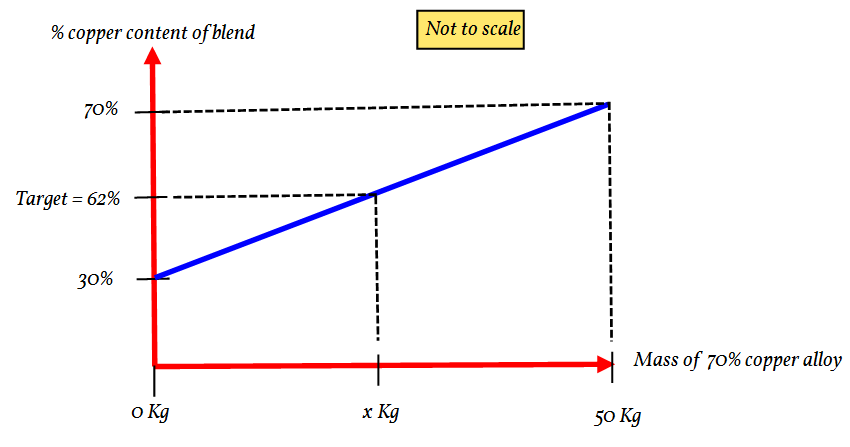Question #91298
3 Answers
The mass of the
Explanation:
This is a mass balance with respect to copper.
Let the mass of the
The mass of the
So,
Explanation:
Let
Then , balancing the input and output of copper content , we get ,
Hence
achieve
Just for the hell of it this is a different approach:
40 kg at 70% content
10 Kg at 30% content
Explanation:
Set material 1
Set material 2
Set target as
Set the amount of 70% alloy be
The mass is fixed at 50Kg thus if you increase the amount of
It models the numbers only approach. It is just that it looks different.

The gradient of part is the same as the gradient of the whole:
So we have:
40 kg at 70% content
10 Kg at 30% content
~~~~~~~~~~~~~~~~~~~~~~~~~~~~~~~~~~
Check:


